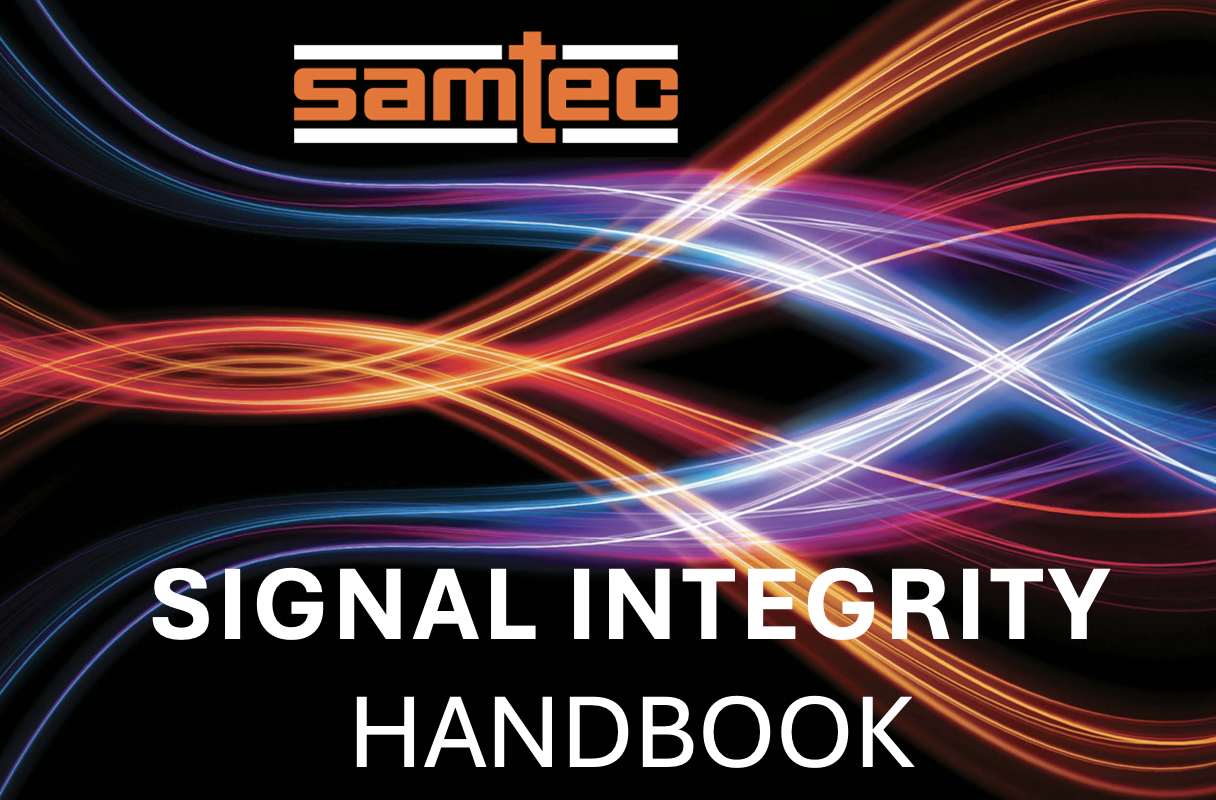
As clock speeds go up, voltages go down and data volumes explode the need for fast, reliable and low latency data channels becomes critical in all kinds of applications. Balancing the requirements of low power and high performance requires the mastery of many skills. At the top of many lists is the need for superior signal integrity, or SI. In its most basic form, SI ensures that a signal is transmitted with sufficient quality (or integrity) to allow effective communication. This definition is deceptively simple. Implementing effective SI requires mastery of many disciplines. There are signal integrity experts among us who have spent an entire career learning how to create reliable, efficient signal channels. But what about the rest of us? It is often difficult to even know where to start. The good news is that Samtec has an extensive set of resources to help. Let’s look at how Samtec demystifies signal integrity for everyone.
The Tools of the Trade
Understanding signal integrity and how to optimize it demands a working knowledge of a vast array of concepts, technologies and metrics. While most of us know what a baud rate and a differential signal are, the concepts of Nyquist frequency, bit error rates, insertion loss and what exactly an eye diagram illustrates may be a less obvious.
The world of frequency domain analysis, S-parameters and electromagnetic compatibility opens a lot of new concepts and analysis regimes as well. The terminology is easy to get lost in, such as evaluating crosstalk through a NEXT or FEXT lens.
The good news is that Samtec, a company that has mastered signal integrity to deliver high performance data channels of all types, also provides a wide range of tools to help us all understand signal integrity – why it’s important, how to measure it and how to optimize it.
If you are unfamiliar with Samtec, you can get a good overview of what the company has to offer on SemiWiki here.
Samtec to the Rescue
A core resource to help navigate the subtleties and semantics of signal integrity is the document referenced at the top of this post. Samtec’s Signal Integrity Handbook provides everything you need to decode what good signal integrity practices look like and why they are so important. A link is coming so you can get your copy. You’ll be glad to have it. Let’s first look at what’s covered in this handbook and touch on some of the other ways Samtec helps its customers achieve the best system performance possible.
The handbook begins by covering the basics – the definition of signal integrity and the differences in dealing with single-ended and differential signals. Key signaling terms such as NRZ and PAM4 are then explained. We then explore the entire world of frequency domain analysis and the role of S-parameters. Topics such as insertion loss, return loss and crosstalk are covered here.
The basics of time domain analysis are then explored, with a discussion of topics such as impedance, apparent impedance, propagation delay and skew. The various metrics used to characterize channel performance are then covered. This is followed by a discussion of modeling considerations, where topics such as simulation tools and validation are explored.
System analysis is then covered. This is where we learn about eye diagrams. Methods to select appropriate connectors and how to use them are then detailed. The handbook concludes with a discussion of signal integrity for RF systems.
You will not likely read this handbook cover to cover, although it is quite well organized and easily consumed. Rather, it will become a reference for you as you navigate the challenges of your next system design.
Beyond the Signal Integrity Handbook, Samtec offers a broad set of resources to dig into the many topics associated with signal integrity. These take the form of short videos and informative blogs. There are links to some of these resources embedded in the handbook, which is quite convenient. If you want a quick overview of the Samtec Signal Integrity Group, you can get that in under two minutes with this informative video. If you want broader access to experts and materials, you can find that on Samtec’s Signal Integrity Center of Excellence. If you’ve moved beyond the basics, Samtec also offers its monthly gEEk spEEK webinar series.

To Learn More
At last, here is where you can download your copy of the Samtec Signal Integrity Handbook. Keep it handy when you start your next design. And that’s how Samtec demystifies signal integrity for everyone.
Share this post via:





Comments
There are no comments yet.
You must register or log in to view/post comments.